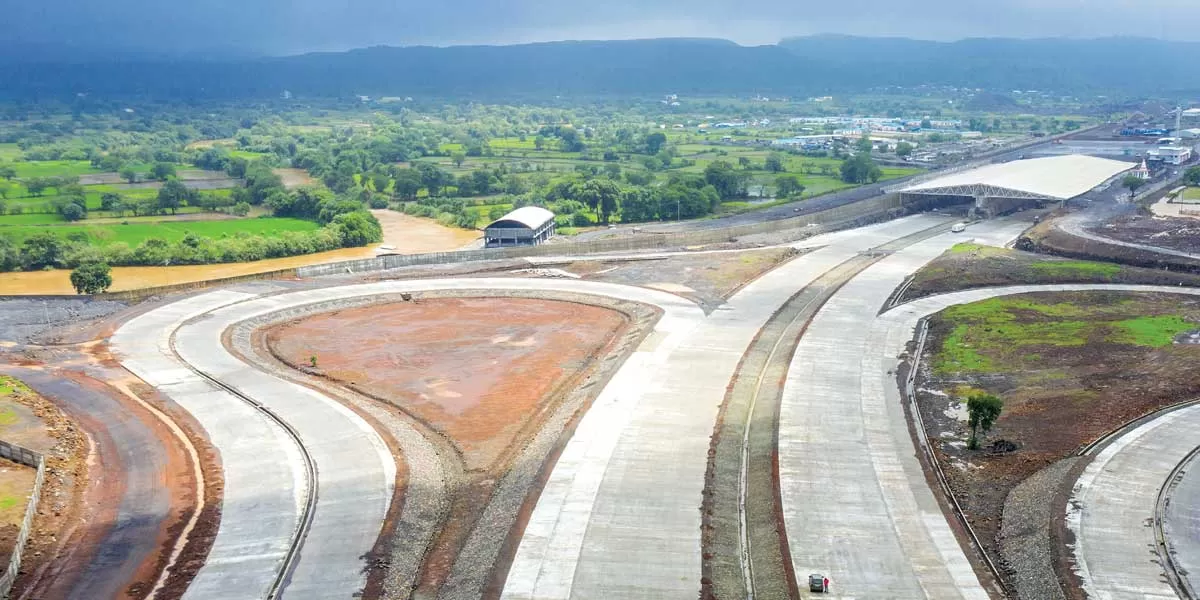India’s road infrastructure has evolved through innovative public-private partnerships, technological advancements and sustainability initiatives, driving economic growth and setting global standards.
India’s journey in transforming its road infrastructure is a tale of evolution, innovation, and collaboration, reflecting a significant shift from traditional government-led projects to a dynamic, inclusive framework involving public-private partnerships (PPPs). This transformation, which spans over three decades, represents a pivotal chapter in India’s development, marking its transition into a modern economic powerhouse with a robust infrastructure at its core.
Traditionally, India’s road infrastructure development was predominantly managed by the government with funding sourced
from public coffers. As the Indian economy began to expand rapidly, the limitations of this approach became apparent, prompting policymakers to seek alternative models.
This led to the adoption of PPPs, which became a cornerstone of India’s strategy for infrastructure expansion, leveraging private sector efficiencies and capital to meet the growing demands of its economy.
Evolution of road procurement
The shift towards involving the private sector was driven by the need for specialised expertise in handling complex projects. RK Pandey, Former Member, National Highway Authority of India (NHAI), notes that initially, the government managed road projects in-house. However, as projects increased in complexity, the necessity for external expertise became evident, leading to greater private sector involvement in both project preparation and execution, which enhanced the quality and efficiency of project delivery and also helped overcome resource constraints faced by the government. In this period, private sector participation in road projects saw a remarkable increase from just 0.3 per cent of the total budget in 1992 to 42 per cent in 2012. The use of innovative financing models like the Hybrid Annuity Model (HAM) played a crucial role in sustaining growth and driving efficiency within the sector.
Technological advancements
The adoption of advanced technologies has been a key feature of India’s road sector transformation.
SK Nirmal, Secretary General, Indian Roads Congress (IRC), highlights the significant advancements over the past two decades. The government’s focus on infrastructure development, supported by substantial funding allocations, has enabled the integration of modern tools such as digitisation in highway planning and the use of sustainable materials like waste plastic in pavement construction.
Technological innovations like Light Detection and Ranging (LiDAR) and drone surveys have revolutionised project planning and execution, positioning India as a leader in infrastructure innovation globally.
“Today, we’re proud to report the construction of over 10,000 km of national highways in the last five years alone,
with this year’s tally surpassing 12,000 km.
The Indian government has prioritised infrastructure development, allocating substantial funds amounting to around
?`2.7 trillion, nearly exhausting the entire
sum by 2024,” said Nirmal.
Environmental and safety considerations
Addressing environmental impacts and enhancing road safety have been critical aspects of road infrastructure development. Professor Satish Pandey, Scientist, CSIR-Central Road Research Institute, points out the challenges of natural resource depletion, with projections indicating an annual consumption of 2.5 billion tonne of natural aggregates for road construction by 2025. To combat these challenges, India has embraced road recycling technologies and the utilisation of industrial by-products like steel slag.
Safety remains a paramount concern, with organisations like the IRC developing stringent guidelines and standards to mitigate accidents through standardised road designs and rigorous safety audits.
Financial opportunities
The evolving landscape of India’s road infrastructure has also opened doors to numerous financial opportunities, attracting global investors. Ashish Kumar Singh, CGM – Finance, National Highway Authority of India (NHAI), discussed how transparency and strategic planning have enhanced investor confidence, with investments expected to surpass significant figures. Lessons from past experiences, such as the National Highway Toll Collection controversy, have been instrumental
in refining procurement frameworks and enhancing transparency.
“As we look to the future, plans are underway for the development of 50,000 km of access-controlled highways, requiring a strategic mix of funding models. While challenges persist, our experience from past initiatives informs our approach to refining agreements, enhancing transparency, and incorporating sustainable practices. Moving forward, we’re committed to environmental responsibility, exploring initiatives to integrate sustainable technologies and practices into our projects. This includes considering mandatory inclusion of sustainable elements in project designs and exploring avenues for carbon credit generation and trading”, added
AK Singh.
Ankit Jain, CFO, Cube Highways Growth Advisors, adds that transparent project documentation since 2013-14 and successful programmes like toll-operate-transfer (TOT) have attracted investors with clean, diverse assets. Addressing revenue and traffic risks adequately is crucial for maintaining this investor confidence and ensuring the commercial viability of projects.
He said, “NHAI deserves credit for transparent project documentation, boosting investor confidence since 2013-14. The well-regarded TOT programme attracts investors with clean, diverse assets. Lessons from past aggressive bidding in 2012-13 highlight the importance of transparent assumptions on GDP, aligning expectations
and fostering trust. To enhance commercial viability, extending concession periods beyond 20 years is suggested, allowing for longer construction periods. Streamlining concession agreements between different models like TOT and build-operator-transfer (BOT) would ease investor participation.”
Challenges in road construction
Subodh Dixit, Former Executive Director, Shapoorji Pallonji, highlighted key challenges in road construction, including safety hazards and inefficient project execution. By prioritising safety measures and fostering genuine partnerships, India can navigate complex construction landscapes effectively. The construction process for road projects is intricate, spanning different geographical regions and states, each with its own set of challenges. Issues such as land acquisition, local politics, environmental concerns, and varying interests have complicated execution. Continuous refinement of the process, along with effective risk-sharing mechanisms, is crucial for sustainable project success.
Furthermore, there is a need to address traffic projections and revenue risks effectively. Initiatives like infrastructure investment trusts (InvITs) and TOT models offer promising revenue streams and attract diverse investors. Striking a balance between risk and reward is vital to sustain investor confidence and secure project success.
The road ahead
India’s transformative journey in road infrastructure is a testament to the power of innovation, collaboration, and strategic foresight. By leveraging technological advancements, embracing sustainable practices, unlocking financial opportunities, and continuously addressing construction challenges, India is not only enhancing its connectivity and efficiency but is also setting a global standard for infrastructure development. This ongoing evolution ensures that the nation’s infrastructure is robust, sustainable, and capable of supporting its economic aspirations for generations to come.




















